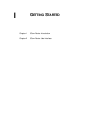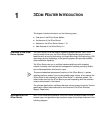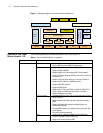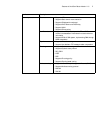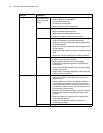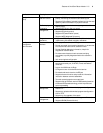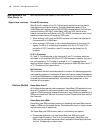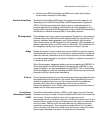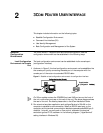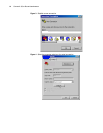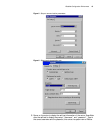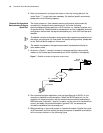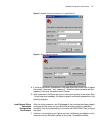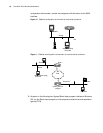New Features of the 3Com Router 1.x 11
■ Combined with BDR, Frame Relay over ISDN can be taken as the backup
communication method for Frame Relay.
Multilink Frame Relay The Multilink Frame Relay (MFR) feature introduces functionality based on the
Frame Relay Forum Multilink Frame Relay UNI/NNI Implementation Agreement
(FRF.16). This feature provides a cost-effective way to increase bandwidth for
particular applications by enabling multiple serial links to be aggregated into a
single bundle of bandwidth. MFR is supported on User-to-Network Interfaces (UNI)
and Network-to-Network Interfaces (NNI) in Frame Relay networks.
FR Compression FR compression technology is used to compress the FR packets for the purpose of
effectively saving the network bandwidth and decreasing the network load, and
hence to implement data transmission over FR networks with high efficiency.
3Com Routers follow the FRF.9 standard for FR compression. FR compression can
achieve a significant effect on a FR line with low bandwidth. FR interfaces fall into
two categories, namely, point-to-point interface and multipoint interface.
Bridge Bridges are a type of network devices that connect LANs at the data link layer for
data transmission among them. For some small or remote networks, a bridge can
reduce the network maintenance cost and free the network terminal subscribers
from making special settings for the devices. In addition, its network connection is
no difference from a HUB.
3Com Routers support transparent bridging and are compatible with IEEE 802.1d.
The routers support the STP and bridging functions defined in IEEE 802.1d and
support bridging on the links encapsulated with PPP, HDLC, X.25, or Frame Relay,
as well as bridging on VLAN sub-interfaces and BDR. Furthermore, the routers can
implement multi-port binding and load sharing.
IP Count IP count implements accounting on the incoming and outgoing packets as well as
the packets denied by the firewall on the routers. When implementing IP count,
whether the packets match the count list rules and whether the packets are
denied by the firewall, are two standards by which the router sorts the
bidirectional packets for count. When making data statistics, both the number of
packets and the total bytes are recorded.
Virtual Router
Redundancy Protocol
(VRRP)
Virtual Router Redundancy Protocol (VRRP) is a fault tolerant protocol. Normally,
the default route set for a host in a network takes the GW route of the network as
the next hop. Through the default route, the host can carry out the
communications with the external networks. If the GW route fails to work, all the
hosts that take it as the next hop on the segment will be unable to communicate
with the outside. VRRP can fulfill the router redundancy by assigning multiple
routers into a router group. Thus, whenever a member fails to work, a backup
router will take up the work of the failed router and thus can ensure the normal
communications between the hosts on the network and the outside.



